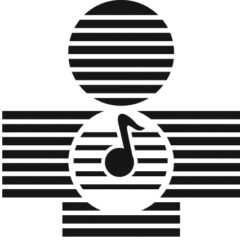Michelle Aalders circulated a survey At our May 17th meeting, which featured a panel discussion about sight reading. These are the results to the survey conducted:
Sight-reading Survey SRMTA Saskatoon 2017
- Do you consider yourself a good sight reader? Yes/No (please circle one)
- Yes- 12 people
- No- 2 people
- If you answered yes to #1- how did you become a good sight-reader?
- Sight-reading a lot of music for fun
- read through a lot of repertoire
- “no idea”
- playing in church/hymns/reading chords
- playing in church at a young age
- accompanying choirs & soloists
- necessity/played at church/spontaneous sing-alongs/no notice to prepare/accompanist for singers& choirs & instrumentalists often on short notice/learned from Boris Berlin
- variety of repertoire, especially church music/accompanying
- playing for a choir/church
- lots of learning music in a short time/always new scores/mostly chamber music/accompanying
- accompanying/especially modern pieces
- Piano Kids/Leila Fletcher/ABC
- 4-Star, hymn reading, teaching
- If you answered no to #1- why do you think you are not a good sight-reader?
- emphasis placed on learning repertoire
- teacher didn’t emphasize it
- “I am a non-fixed pitch instrument”
- What method did you use as a young student to learn how to read music?
- Leila Fletcher/John Thompson
- 4-Star
- sight-reading and rhythm every day
- 4-star
- John Thompson
- Michael Aaron/read as much music as I could
- Leila Fletcher
- Kelly Kirby Method
- kno lo pla/Bastien
- sang everything by ear until university age (17)
- “sight-reading was only done a few weeks prior to examinations- and that was to be done only at home”
- What are some of the books you use with your students for sight reading?
- Music Tree Activities/Piano Adventures Sight-reading books, Winning Rhythms, I Can Read
- Music/Barbara Siemens piano workbooks/4-Star/Bennett & Capps
- Melodia- complete sight-reading/solfege sheets that they generate/movable do
- various easy duets/pronto pizazz/methods with duet parts (like Alfred Premiere or Piano Adventures)/rhythm cups (from website “compose/create”)
- 4-star/supplementary material- easier music
- RCM sight-reading/random books from my music library
- Bastien/Four Star/Dozen-a-Day
- Cora Ahrens/Frederick Harris
- 4-Star/anything
- sight-reading/rhythm every day/ Piano Adventures/Flashcards & Books
- 4-Star
- lots of ‘Pop’ music/Disney movie music/ for older students- any music that has a lot of accidentals & dynamic changes/prior to exams I use the new Sight-reading books put out by RCM
- If you are technologically savvy, what are some of the apps you use for sight reading?
- piano maestro/rhythm lab/rhythm cat/rhythm cat 2/note rush/flash note derby
- perfect ear
- flashnote derby/rhythm cats/read ahead/rhythm cats
- flashnote derby/mynotegames/note rush
- What are some of the techniques you use when asking a student to sightread?
- cover up the music as they read it, so they look forward/give quick studies- one new piece
- every week from a beginner method/play with CD so that if they get lost, they need to look
- ahead and come back in/intervallic reading/chord shapes/ count off before beginning/name the key before beginning/look for patterns & changes in position/set a slow tempo
- identifying chords/key/patterns
- look over the music generally-time signature/key signature/work out difficult notes/highest & lowest notes/playing duets/counting difficulties such as dotted rhythms & irregular rhythms
- find the key/correct breath before beginning
- identify key of the piece/sing up & down the scale on syllables/identify the starting pitch
- look at the music first & emphasize not stopping
- duets at an early age
- patterns/known already- e.g. broken triads, pentascales/technique 1 learned from Boris Berlin/doghouse game/flash cards/sight-reading games
- slogans/intervals-steps & skips/magnet board
- decide key/look at chords & triads of the keys/clap rhythm of piece/think ahead & keep going
- try to see the picture- focus on melodies & barlines/less importance given to textures
- cover the bars they are playing: eyes forced forward/count aloud for organization & fluency; use metronome/ visualization/audiation/play on lap/encourage expression & phrasing above all
- looking ahead/patterns/key/rhythm
- find a metronome tempo they can do (they set it)
- key- basic chords- V-I/set the tempo, then fit the notes into that
- Please add any additional comments about sight-reading that you think might be helpful:
- Christmas carol arrangements-expressive reading/modern pieces open minds to patterns & keys & rhythmic groupings
- “I think it is important to teach this in connection to musical pieces, even simple ones (learn holistically)- e.g. phrasing, shape, tones (words, breathing)”
- think of the whole piece
- students are encouraged to sight-read their theory/have students play duets or accompany an instrument at sight
- start small/be consistent/occasionally use simple, but well known tunes (e.g. Star Wars)
- “I encourage my students to ‘play’ all types of music during holidays like Christmas, Easter, summer. I don’t encourage students to actually ‘practice’ during holidays, but to enjoy anything that they choose.”
- “I enjoyed the workshop- going to incorporate in my studio”

